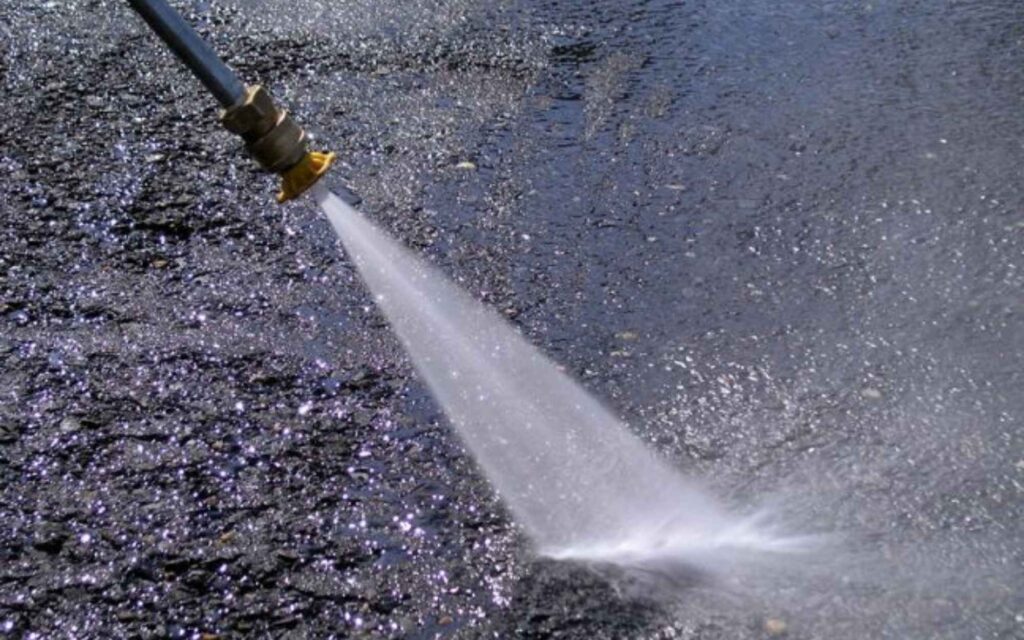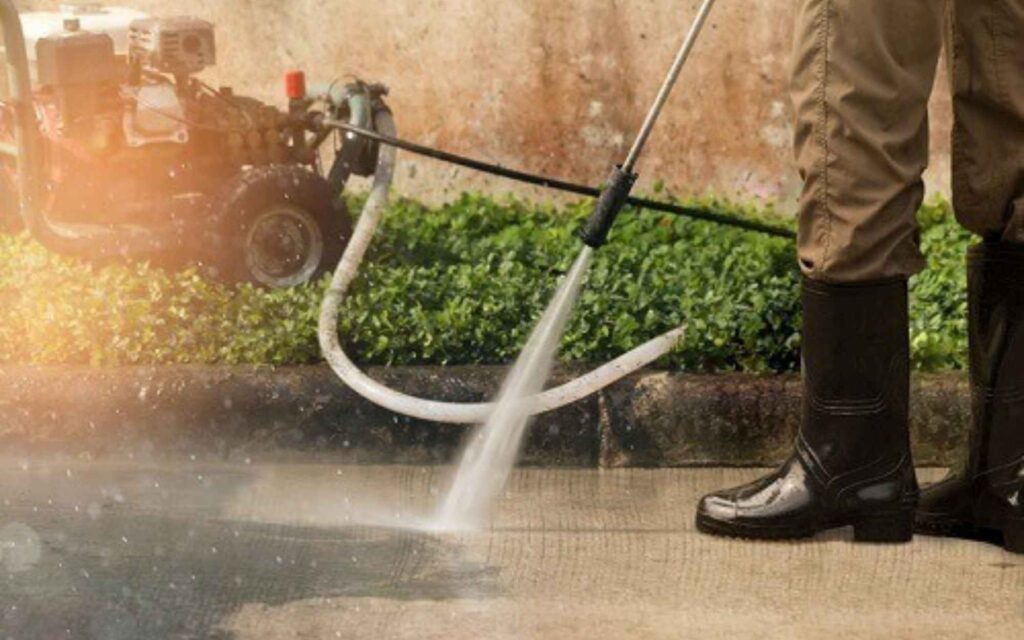Hydraulic oil spills on concrete are common in workshops, construction sites, and garages. Unlike other oils, hydraulic fluid penetrates deeply into concrete, making cleanup tricky if not handled quickly.In this guide, you’ll learn how to remove hydraulic oil from concrete, whether you’re dealing with a fresh spill or a long-standing stain.
Understanding the Nature of Hydraulic Oil Spills
Hydraulic oil is a viscous, high-pressure fluid used in heavy machinery, and when it leaks, it seeps into porous concrete fast—especially if the surface is unsealed.
Common Places Where Spills Occur:
- Automotive repair shops
- Warehouses and factory floors
- Driveways or construction zones
- Home garages with heavy tools or lifts
Step-by-Step Guide to Remove Hydraulic Oil from Concrete

1. Act Fast: Contain and Absorb the Spill
For fresh spills:
- Cover with absorbent material (kitty litter, sawdust, or oil absorbent pads)
- Let it sit for 30–60 minutes
- Sweep and dispose of the material in line with local regulations
👉 Already familiar with motor oil cleanup? Many steps overlap — read:
How to Clean Up a Motor Oil Spill on Concrete
2. Deep Cleaning with a Degreaser
Hydraulic oil leaves a slick residue that won’t budge with water alone. Use:
- Commercial concrete degreasers (heavy-duty type for industrial spills)
- Scrub the area with a stiff bristle brush
- Rinse with hot water, preferably with a pressure washer for better results
👉 Need help choosing the right cleaner? Don’t miss this:
Best Degreasers for Motor Oil on Concrete – Product Review
Cleanup Tips for Sealed vs Unsealed Concrete
| Surface Type | Absorption | Cleaning Difficulty | Tip |
| Sealed | Low | Easier | Use a mild degreaser first |
| Unsealed | High | Harder | Use absorbents + deep-penetrating degreasers |
If your workshop or garage isn’t sealed, future spills will be harder to manage.
👉 Thinking long-term? Learn how to avoid repeat spills:
How to Prevent Motor Oil Stains on Your Driveway or Garage Floor
When to Call a Professional
- If the spill has soaked through large areas
- When environmental disposal laws apply
- For stains affecting public or work zones
A professional cleaner may use steam equipment, chemical stripping agents, or even re-grind the surface in extreme cases.
👉 Curious if it’s worth the price? Read this:
DIY vs Professional Concrete Oil Stain Removal – Which is Better?
FAQs
Q1: Can I use dish soap to clean hydraulic oil?
Dish soap helps for small, surface-level stains, but for deep hydraulic oil, a concrete-safe degreaser is much more effective.
Q2: What’s the best absorbent for hydraulic oil?
Clay-based kitty litter, oil dry, or sawdust are all great. Use them while the oil is still wet.
Q3: Is hydraulic oil harder to clean than motor oil?
Yes. Hydraulic oil is more viscous and often spills in larger volumes, especially in industrial settings.
Q4: Can I seal the floor after cleanup?
Absolutely—and you should. Sealing your concrete after removing oil prevents future stains from soaking in.



